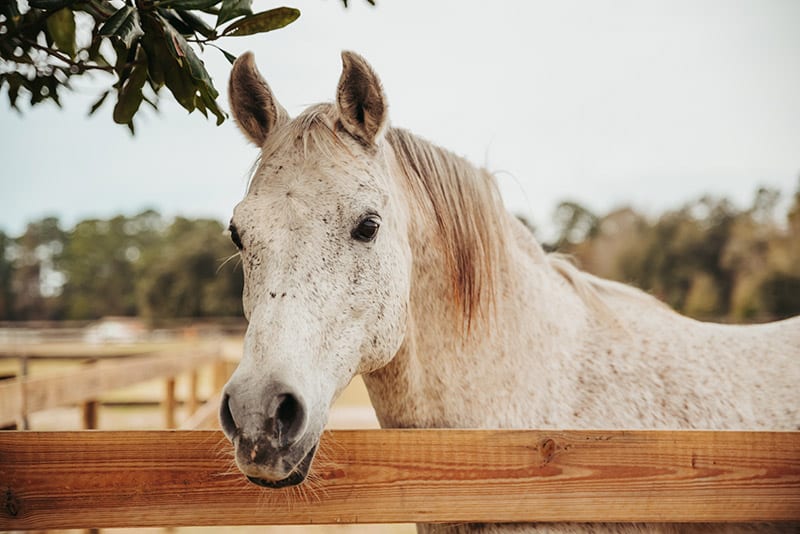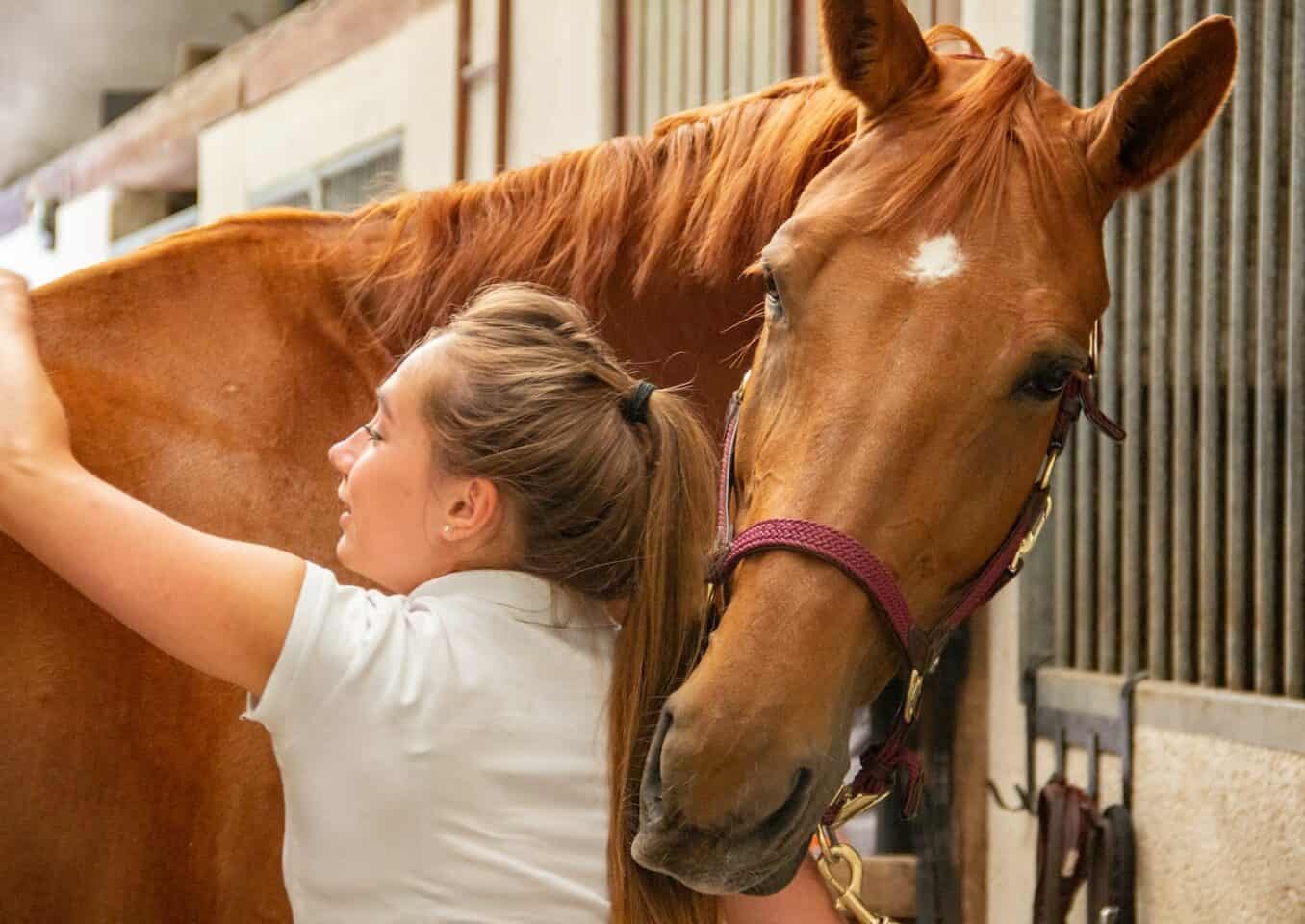Good horse care leads to a strong, interactive and healthy horse and an enjoyable long lived companion!
Horses are large strong animals. They can be quite hardy and enjoyable companions, but this is not without regular attention. They require consistent care and maintenance. They are also social animals that need attention, interaction with you, and activities to keep them from becoming bored.
Keeping a horse involves a dedicated commitment of both time and money. You must providing adequate shelter and an exercise area that will most likely require cleaning, as well as a variety of horse supplies. Basic horse care involves daily feeding and watering, daily exercise, and regular medical attention including vaccinations. But dedicated care will lead to optimal horse health, providing you with a fun and rewarding companion as a pet, for recreation, or for show.
Learn about all types of horse breeds:
Horse Habitat
Horses require some form of shelter to protect them from the elements. They need shade in the summer and protection from wind and cold in the winter. This can be a barn, horse stall, trees, or a simple shade cover depending on the climate. If they are in a small stall (should not be smaller than 12′ by 12′), they need to be turned out in a paddock daily so they can get enough exercise.
Fences should be in good repair. Try to avoid barbed wire because horses can get caught in it. The pasture and all barn areas should be checked for poisonous plants every few months to make sure horses do not ingest them. Gates should be secure and often it is a good idea to use a chain to keep them closed because some horses can learn to open gates.
If a horse is kept on dirt or sand they should be fed in a barrel or feed tub to keep their food off the ground. This will minimize the ingestion of sand, which can lead to sand colic.

Horse Feeding
Horses should have a constant supply of fresh water, and a salt or mineral lick should be provided. As horses are grazing animals, they are used to eating all day, so the more often the better. They are generally fed twice a day: morning and evening.
The main component of a horse’s diet is roughage or hay. If a horse is kept on grass they may not need to be supplied with hay as long as pastures are green. The amount and type of hay to feed depends on the horse’s size and how much exercise the horse is getting. It is a good idea to talk to people at the feed store in your area and your veterinarian about what type of hay is best for your horse
Be careful not to feed too much hay with high protein content, because it can lead to hoof problems, if your horse is getting a lot of protein and not enough exercise. Often it works well to mix different types of hay to achieve a balanced diet, such as a grass hay and a high-calorie hay like alfalfa. Be very careful when feeding grain and err on the side of too little, especially if a horse is not getting much exercise as too much grain can also lead to hoof problems such as laminitis.
Stay away from oats and sweet feeds, because they are too rich and tend to make horses ‘hot’, meaning very excitable. Manufactured supplements such as the Purina products provide better nutrition and are not as rich. It will usually say on the packaging how much to feed, but talk to your veterinarian and adjust the amount of grain according to the amount of exercise the horse is getting. Corn oil can be added to grain if you are trying to get a horse to gain weight. There are also many specialized supplements for coat, joints, and hooves that can be fed for extra nutrition.
Do not feed a horse directly before or after exercise because it can lead to discomfort and problems with digestion.
Horse Grooming
Horses should be groomed regularly to keep their coats in good condition. This also offers a chance to check your horse for cuts, ticks, and general health. Horses’ hooves should be picked out and checked regularly to make sure there are no pebbles stuck in the grooves on the bottom of the hoof.
If the bottom of the hoof looks white and pasty in places, your horse probably has a fungus. Standing in mud usually causes this. The fungus will usually go away if the horse is moved to a dry place, but sometimes it needs to be treated with over-the-counter anti-fungal medicine.

Horse Behavior
Horses are herd animals. If there are multiple horses in a pasture together, they will establish a pecking order and the leader will generally be a mare. It is normal for horses to bite each other and kick once in a while, but if one horse is picking on the others too much, he may need to be separated. Horses will generally travel around the pasture in a group. They will take turns lying down with the ones standing keeping watch.
If the horses are eating grass in a pasture, they should all be able to eat simultaneously without a problem. If you are feeding hay, it is a good idea to spread it out or have several feeders to ensure that each horse is getting enough food. You can also bring horses into stalls at feeding time, which is a good idea for horses that are fed grain or older ones who you want to monitor more closely.
Horses do not like leaving the group so they will be reluctant to leave the pasture or barn when you go riding. This “barn sourness” can be an annoyance to riders, as the horses will whiney back and forth. Horses being ridden will be eager to get back to the barn. This should lessen as the horse gets used to leaving the other horses and learns that making a fuss will not get him back to the barn any sooner.
Featured Image Credit: Philippe Oursel, Unsplash
